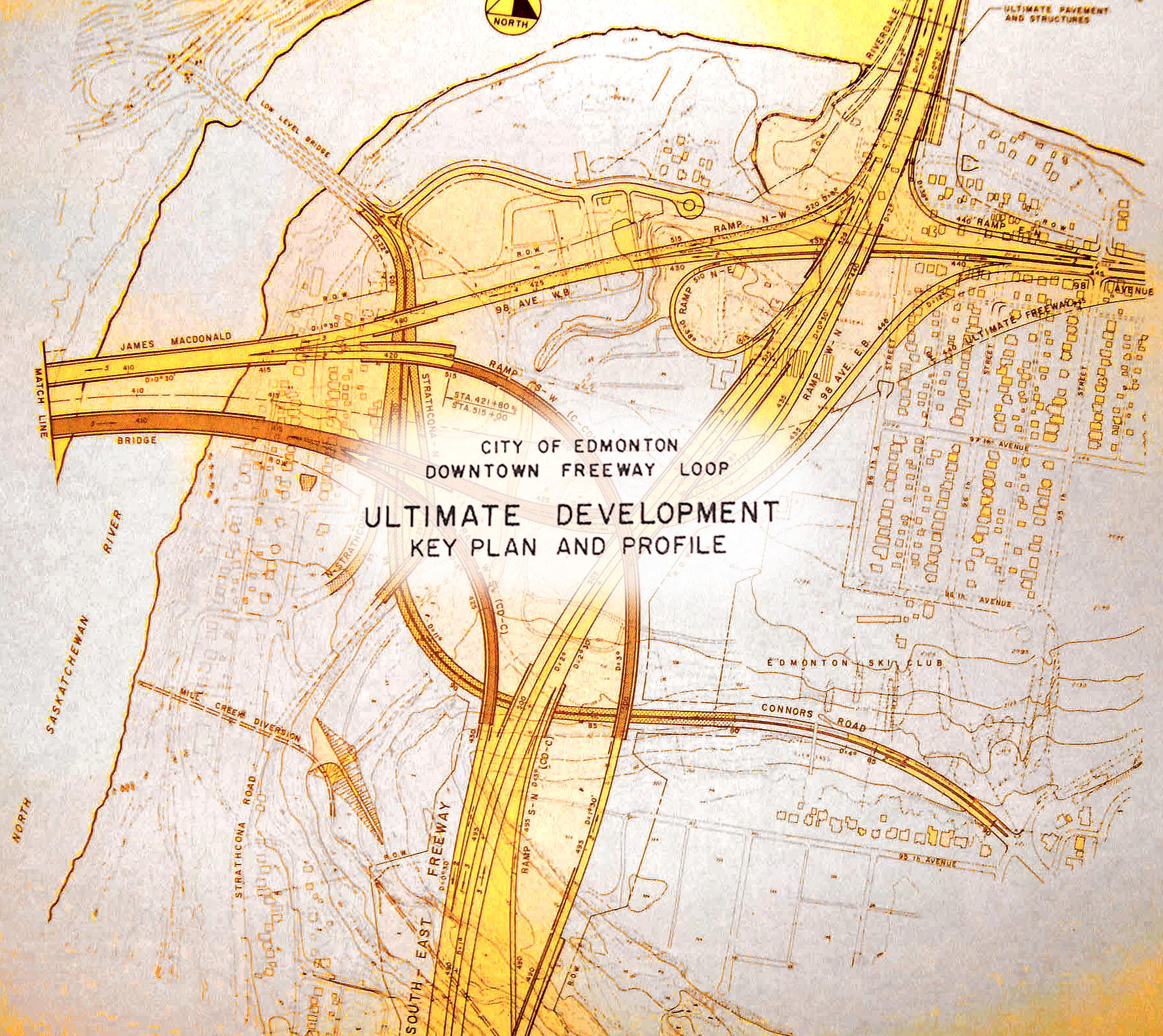Leaked planning documents from the City of Edmonton show plans for a downtown freeway loop cutting through much of downtown and the river valley. In the plans, extensive freeways and interchanges would align with and replace Mill Creek Ravine, 95 St, the land between 106 Ave and 107 Ave, 110 St through 113 St, River Valley Road, and MacKinnon Ravine. Further freeways connecting to the inner loop will extend through many other parts of the city. A freeway loop could bring tens of thousands of single-occupancy cars into the downtown core. Once there, those cars would idle in severe traffic jams, searching for free parking. An anonymous source within the City has reported that future plans would call for demolishing every second building in the downtown to build more surface parking lots, while demolishing the rest to widen roadways.
A 6-lane freeway will replace Mill Creek Ravine, removing the forest, trails, and swimming pool. A 10-lane freeway will cut along the 103 St alignment south through Strathcona, displacing most of the festivals and theatres located in Old Strathcona. Meanwhile, in addition to removing most of the river valley parks, Victoria golf course and park, the Muttart Conservatory and Gallagher Park (home of the Edmonton Folk Music Festival), the neighbourhoods of Rossdale, Cloverdale, McCauley, Alberta Ave, and many others will be demolished to make space for the freeway loop.
Downtown workers will be expected to arrive downtown on the freeway and search for a vacant parking stall. Once parked, they will use laptops and free wifi to work from the comfort of their private vehicles until 5pm, when the downtown core will be evacuated each weekday for pothole repairs and snow clearing. The downtown will be closed on weekends.
Though no one from the City was willing to comment on the record, several commuters applauded the plans.
"How many people use the river valley now? A couple dozen a day? There are more bugs than people. When they pave the river valley, thousands of cars will be able to drive back and forth through it. That's the kind of future city I want to live in," said commuter Rob Green.
Los Angeles, a city known for its extensive freeway system, has seen the benefits of freeways: at 64.4 hours per vehicle wasted in congestion each year (over two and a half days sitting in traffic jams), it leads the United States in congestion.
Another commuter, Rachael Harris, said, "I've never seen anyone in the river valley. It's dangerous down there. All those runners should be licensed and insured in case they cause an accident. The river valley is a waste of space and money. We should just remove it and build a freeway. Then everyone will benefit."
Freeways have been shown in numerous studies to exacerbate congestion and create environmental and economic deadzones in their path.
In contrast, Vancouver, consistently ranking as one of the most liveable cities in the world, has no freeway system and policies against road widening.
The cost of the freeway system is estimated to be $46 billion. Edmonton's share of provincial and federal gas taxes amounts to approximately $122 million each year; borrowing at two tenths of one percent interest, driver taxes are expected to fully pay for the freeway in 701.5 years, in the year 2718.
This post is a parody.
In case it has to be said. Though it does contain several factual statements. You can learn more about Edmonton's Metropolitan Edmonton Transportation Study 1970s freeway proposal on the Edmonton City as Museum Project (ECAMP) podcast. Listen to episode 2, then listen to the other episodes too!





